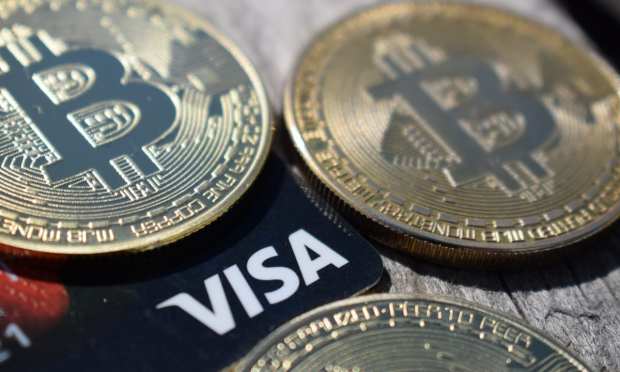Visa Network Will Settle Transactions In Crypto, First Use Case USD Stablecoin

Visa announced Monday (March 29) that it is the first major payments network to settle transactions in dollar denominated stablecoins, which the company claimed is an important step into bringing cryptocurrencies into the payments and commerce mainstream.
Cuy Sheffield, vice president and head of Crypto at Visa, told Karen Webster the announcement represents an upgrade to Visa’s settlement capabilities by allowing crypto-native companies to formulate new business models without grappling with traditional fiat in their treasury and settlement workflows. These fiat-denominated cryptocurrencies are settled and cleared, treated like any of the other 160 fiat-denominated currencies Visa clears and settles over its global rails.
Sheffield said in order for cryptocurrencies to become an accepted payment method used by consumers to pay for things at the merchants they want to shop, streamlining how those transactions are settled with cypto FinTechs, payments networks and merchants is key. At a high level, the change is invisible to consumers and merchants, but it sets the stage for more widespread use of digital currencies, and for the merchants eager to transact with the growing number of users with cryptocurrencies in their digital wallets to spend.
As Sheffield told Webster: “This is a way that Visa is continuing to bridge digital and traditional fiat currencies.”
Defining The Details
In terms of the actual upgrade, the payments network said Monday that it has been piloting the settlement capability with crypto platform Crypto.com over the blockchain Ethereum on the Visa network, adding in a press release that they plan to offer the USD Coin (USDC) settlement capabilities to additional crypto FinTech partners later this year.
Among the most immediate use cases noted by Sheffield: a growing number of crypto wallet firms have been coming to Visa in the hopes of issuing cards. But that issuance differs from “traditional” card issuance because these crypto firms have built everything on the foundation of digital currencies.
“[Crypto wallet firms] source consumer dollars in digital currencies, and they operate their corporate treasury in digital currency, so it’s sometimes been difficult for them to have to manage converting digital currencies back into traditional fiat that is deposited into banks just to settle their obligations with Visa through existing bank wires,” he said.
Individual wallet holders thus become transactors rather than merely traders, using Visa crypto debit cards to transact at all Visa merchant locations. And merchants can accept transactions from wallet holders who choose to pay with crypto yet get paid in their fiat currency of choice, he said.
Delving into the mechanics, the pilot allows Crypto.com to send USDC to Visa to settle a portion of obligations tied to the Crypto.com Visa card program. The settlement is done in conjunction with Anchorage, billed as the first federally chartered digital asset bank and an exclusive Visa digital currency settlement partner.
Visa’s treasury systems are integrated with Anchorage, acting as the payment network’s digital asset settlement agent. The new settlement reports tied to the pilot include settlement obligations along with the public blockchain addresses for the account management of the crypto wallets and the issuers themselves.
The use of stablecoins has been on the rise. And as is germane for the USDCs themselves (pegged to U.S. dollars), global FinTech Circle has estimated that there is roughly $10 billion of USDCs in circulation, growing triple-digit percentage points year over year. USDC values tend to be stable, especially relative to other digital offerings, and are stored in Circle or Coinbase wallets; the stablecoin is supported by Centre, a consortium founded by Circle and Coinbase.
Against the backdrop of USDC’s growth, Sheffield said, “we saw [this demand coming], and we invested heavily in upgrading our infrastructure … we continue to see interest from our clients about the ways they can build products on top of USDC and how they can interact with people in USDC.”
Visa, in other words, is providing acceptance on its network for those who have crypto assets, with integration at the point of sale (POS) that need not be built by the crypto players themselves or the merchants.
Getting Crypto Cards Out Into The Field
As has been noted with the standard settlement operating procedure, for purchases made on Crypto.com Visa cards (or with digital crypto wallets and cards in general), the crypto platform must first convert the digital currencies into traditional fiat. But through the use of the stablecoins across Visa’s issuers and acquirers, said Sheffield, FinTechs are able to settle in crypto while merchants accept fiat. Consumers can then use their debit cards as they would any other debit card.
“The merchant doesn’t have to change what they do to be able to accommodate more and more of these crypto card programs that are coming onto the Visa network,” said Sheffield — and for Visa, the mechanics of clearing and settling are similar to what might be seen with any of the currencies it supports today.
He said at present, supporting a digital currency like USDC is easier for crypto wallet providers that, for example, are letting consumers spend bitcoin. It’s actually easier to convert bitcoin into USDC that it is to convert bitcoin to fiat (in bank accounts).
And looking ahead, “We built the capability in a way where we can support other digital currencies in the future, including potential central bank digital currencies,” he said, adding that “we want to make sure that these form factors can run over our network and be settled over our network. It’s a logical approach to assume that consumers should be able to pay with whatever they want to pay with.”
